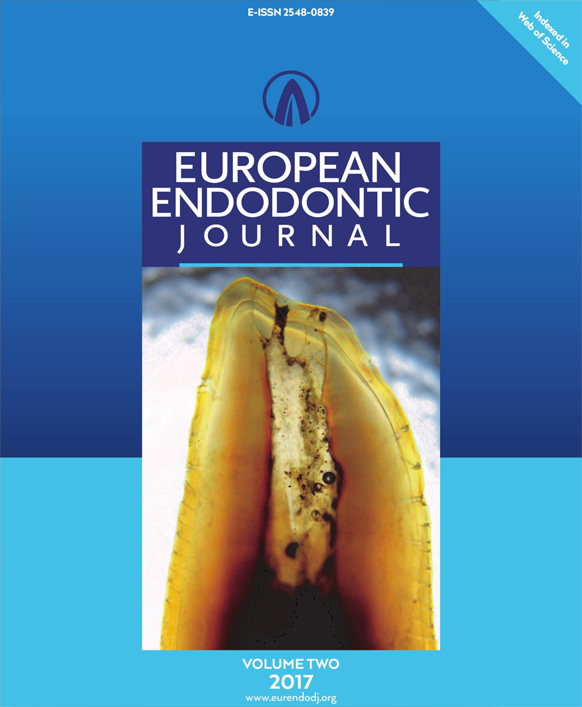
European Endodontic Journal
Yazarlar: Chia- Shiuan Lin, Maria Llacer- Martinez, Chirag C Sheth, Mar Jovani- Sancho, Benjamín Martín- Biedm
Konular:-
DOI:10.14744/eej.2018.08208
Anahtar Kelimeler: Canal anatomy,Dens evaginatus,Tubercle fracture,Premolar,Complication,Prevalence
Özet: Dens evaginatus (DE) is an odontogenic developmental anomaly that can be defined as a supernumerary tubercle structure that extends from the occlusal surface of the affected tooth. Tubercular fracture or attrition of the tubercle, invaded by pulp tissue, may cause various pulpal diseases, such as pulpitis, pulp necrosis, and periapical periodontitis. This study aimed to determine the prevalence of premolars with DE in Taiwanese and Spanish study populations and to report associated dental complications. Methods: This study was based on the clinical examination of volunteers of Spanish and Taiwanese origin, recruited among the undergraduate dentistry students at CEU-Cardenal Herrera University, Valencia, Spain. Informed consents were obtained from students identified with DE. Additional examinations were performed, including vitality test, percussion, palpation, and radiographs, to diagnosis the status of the pulp and periapical tissue. Results: The prevalence of DE among Taiwanese students was 4.08%, compared to 0% in the Spanish Caucasian group. In the Taiwanese group, the occurrence of DE in premolars was more common in the mandibular (78.9%) compared to the maxillar region (21.1%). In 84% of the cases, DE-affected teeth were found bilaterally. The mandibular second premolar was the most commonly involved tooth (57.8%). When investigating the complications related to DE among six affected Taiwanese students, it was found that two teeth (10.5%) had received pulp treatment, one of them prior to complete root formation. Conclusion: DE appears to be more prevalent in people of Mongoloid origin and rare in those of Caucasian origin. The wear or fracture of DE may affect pulpal tissue, leading to incomplete root growth.